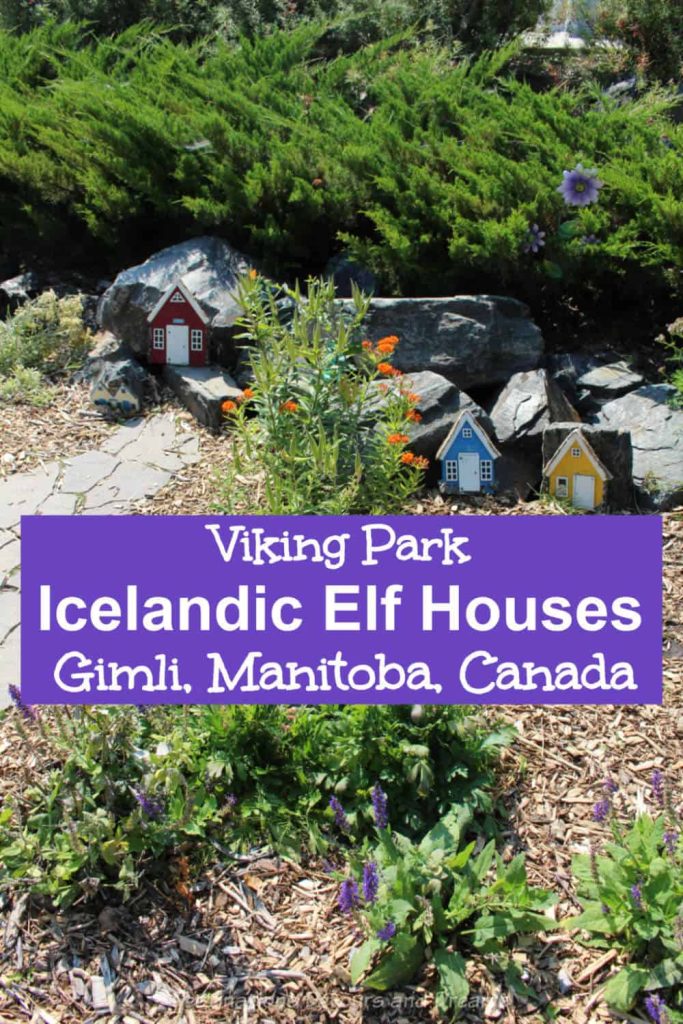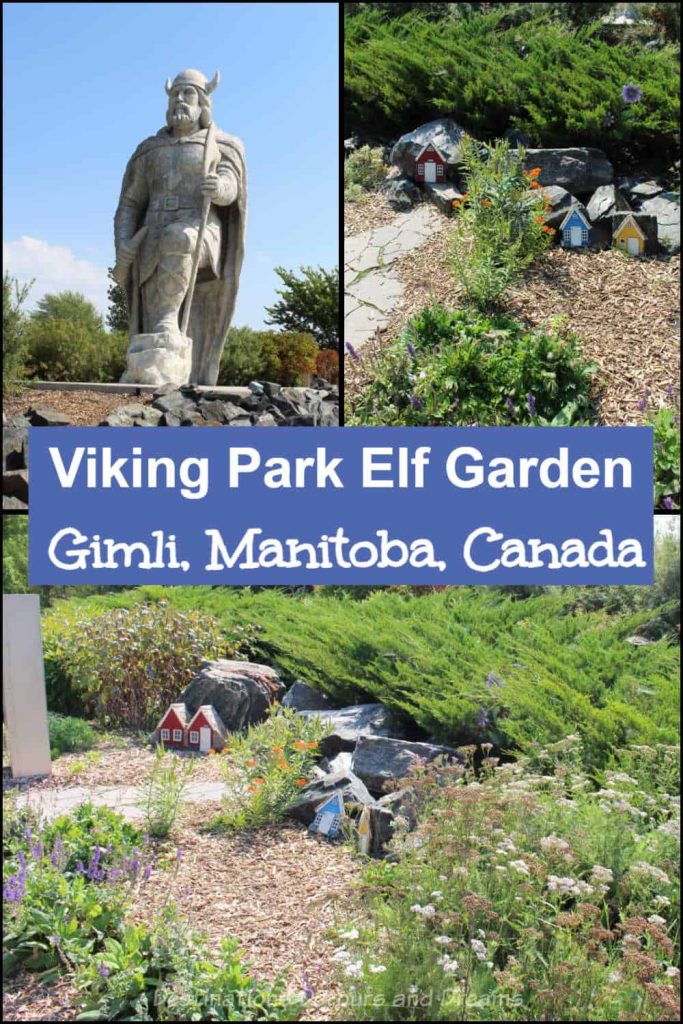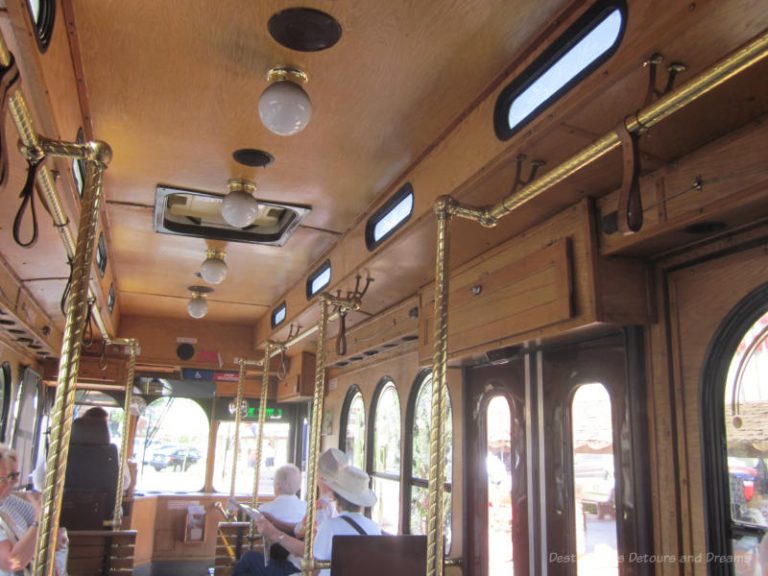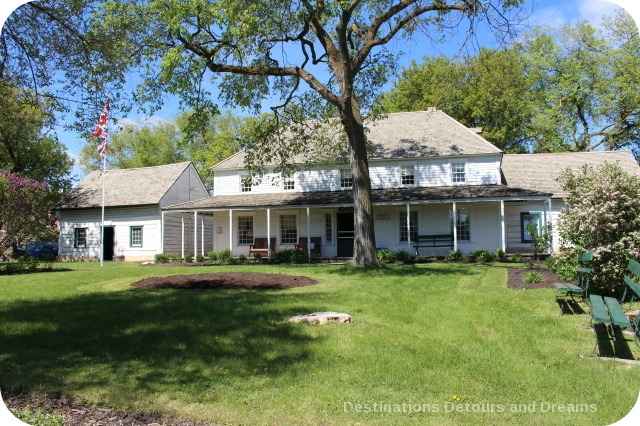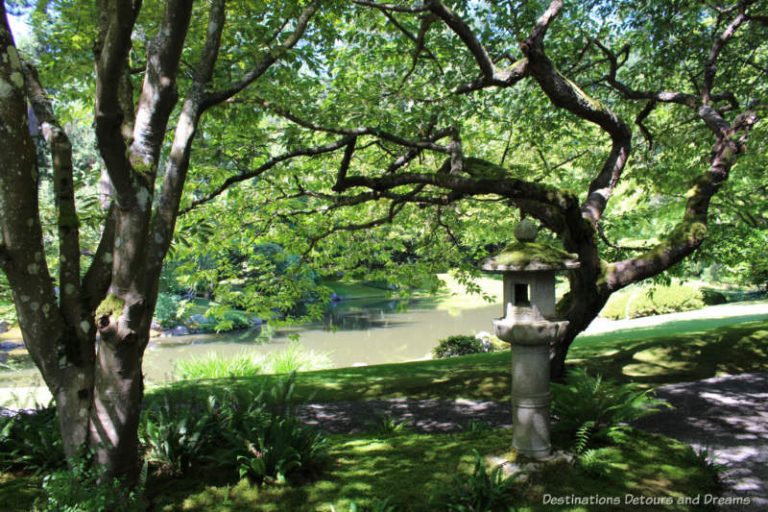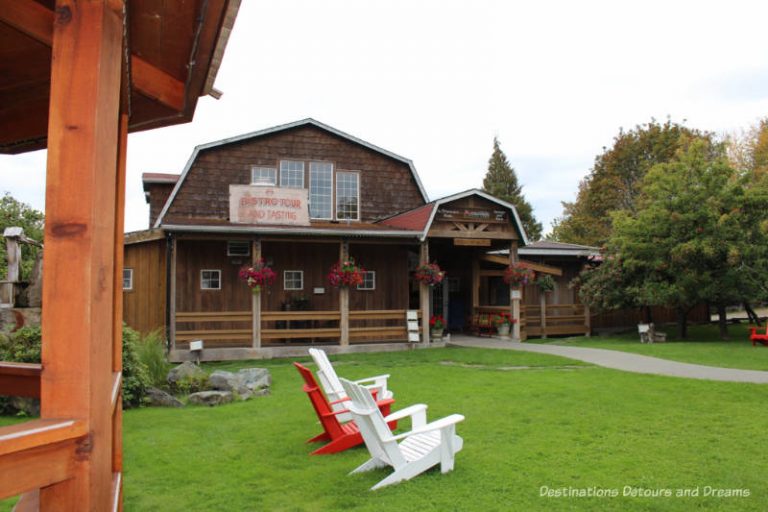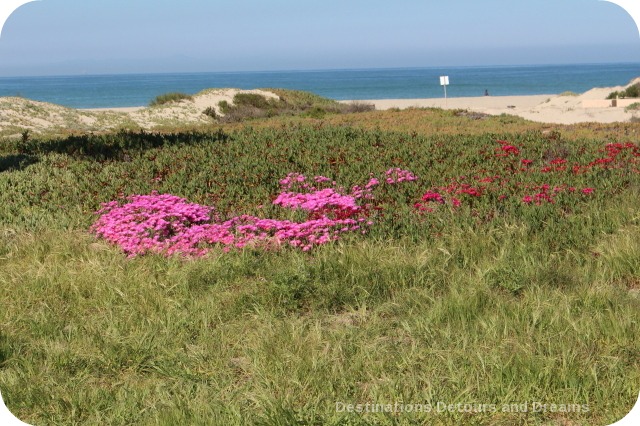Icelandic Elf Houses In Manitoba
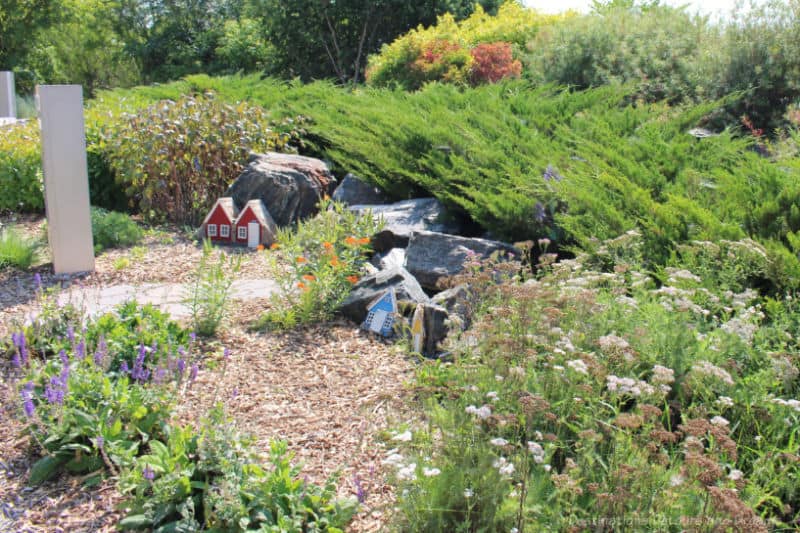
Viking Park in Gimli, Manitoba, Canada, once the heart of New Iceland, features elf houses and a giant Viking statue
Elves are highly respected in Icelandic culture. Tiny elf houses that blend into their natural surroundings can be found throughout the country. People build these houses to keep traditions alive, honour the elves, or alert visitors to their presence. You can also find Icelandic elf houses in the centre of Canada, in Viking Park in Gimli, Manitoba.
Gimli is a beach resort town located on the western shores of Lake Winnipeg, about an hour’s drive north of the city of Winnipeg. It was the heart of New Iceland, a community created by Icelandic immigrants. In 1875, the Canadian government granted the immigrants a reserve along the west shore of Lake Winnipeg. New Iceland had its own constitution and government until 1887. The community is more ethnically diverse today, but the connection to its Icelandic roots remains strong with visible signs of the heritage found throughout the town.
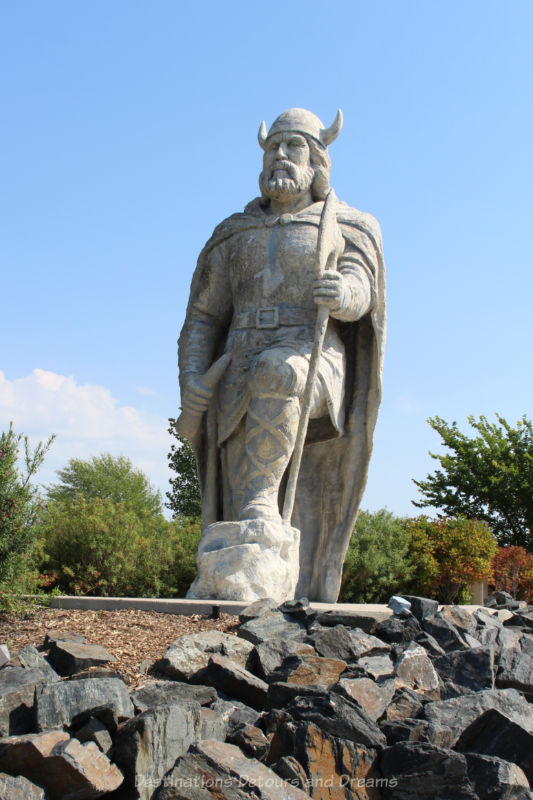
A 15-foot-tall fiberglass Viking statue stands in a park overlooking the harbour. The statue was unveiled in 1967 and moved to its current location on Second Avenue in 1988. In 2017, Viking Park opened around the statue. It is here that you will find the Elf Houses, among gardens of Indigenous plants, grasses, and flowers.

Signage beside the elf houses states that the earliest references to elves come from Skaldic poetry, the Poetic Edda, and the legendary sagas. Elves are associated with the Gods, and are luminous beings, more beautiful than the sun. Elves are also known to be mischievous and will cause trouble if disturbed. In Iceland, roads have been re-routed in order not to interfere with known elf habitats. Like birds and butterflies, elves are drawn to wildflowers, so their houses have been placed here.
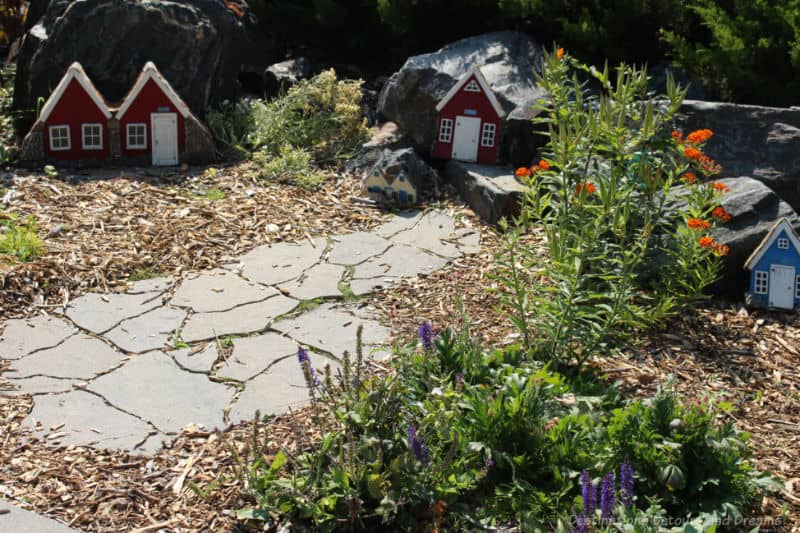
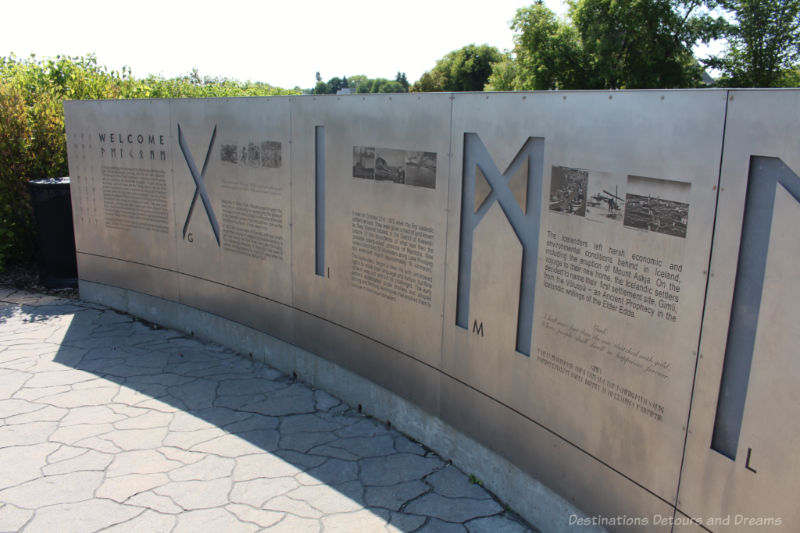
The Culture and History Wall at the edge of the park contains historical information about the park and about the Icelandic settlement.
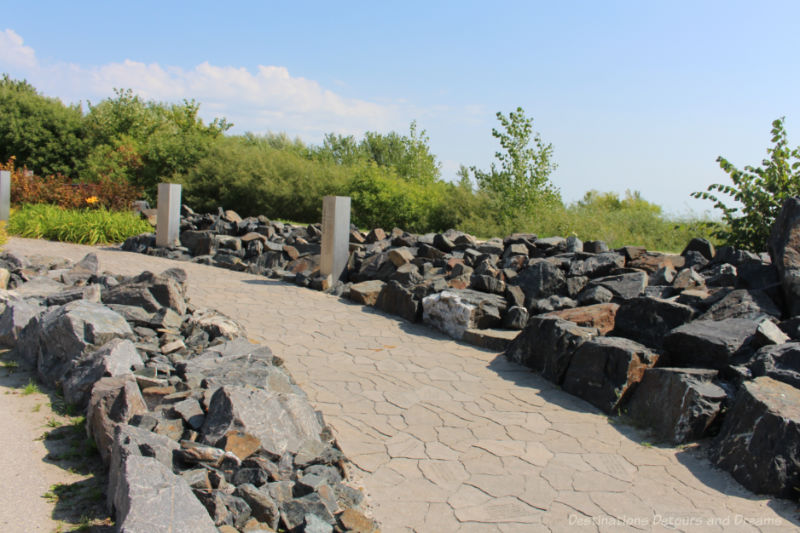
Paving stones on the walkway contain inscribed messages and greetings from park donors.
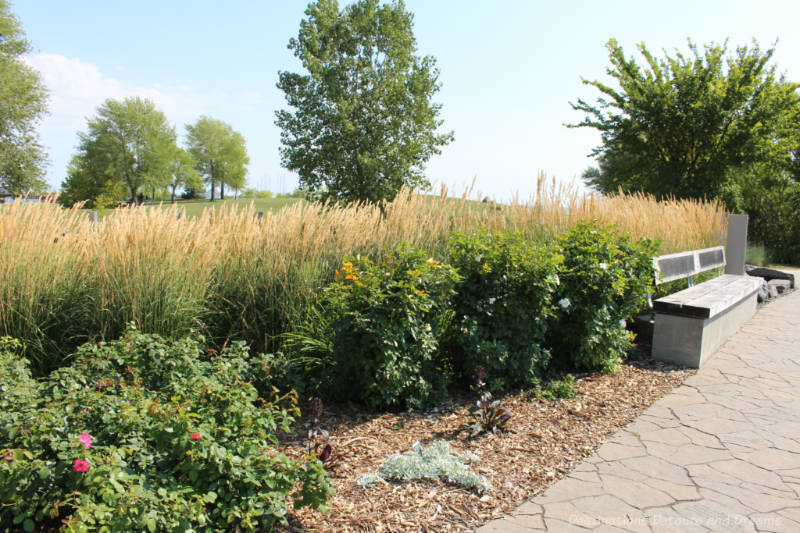
Benches offer a chance to sit and enjoy the park. The field behind the shrubs and grasses in the above photo is Harbour Hill, adjacent to Viking Park. It is the location of Islendingadagurinn, an Icelandic festival held annually over the long weekend at the beginning of August. The festival features live music from Canadian and Icelandic musicians, race events and sports competitions, Viking battle re-enactments, cultural displays, Icelandic food, craft vendors, midway rides, and evening fireworks. Each year, a woman is selected to be the festival’s Fjallkona (Maid of the Mountain). She represents Iceland and personifies New Iceland’s ongoing relationship with Iceland. Stainless steel plaques bordering Fjallkona Walkway, a timber path leading to the east entrance of Viking Park, list the names of the Fjallkonas and the years they were crowned.
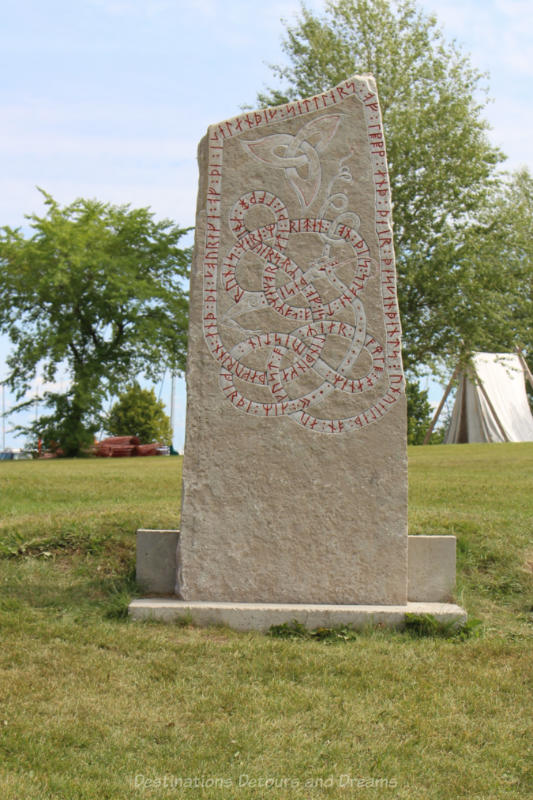
Sometimed Icelandic elves are referred to as huldufólk, which means “hidden people.” I have, however, read articles that say huldufólk are a distinct being from elves or just one type of elf.
Signage in the Elf Garden in Viking Park reads: Elves will sometimes show themselves. If you look closely, you may see an elf looking back at you.
Never miss a story. Sign up for Destinations Detours and Dreams free monthly e-newsletter and receive behind-the-scenes information and sneak peeks ahead.
